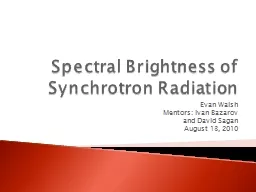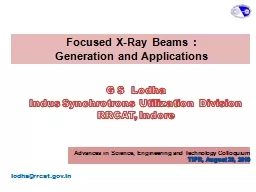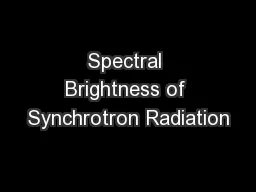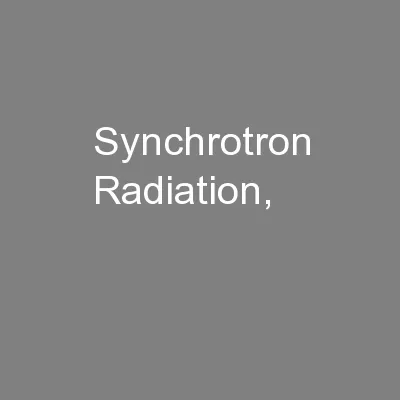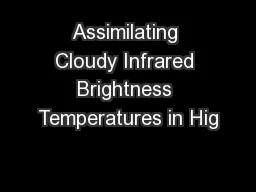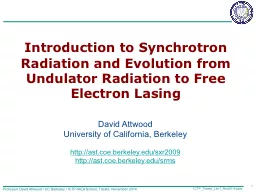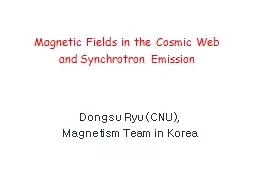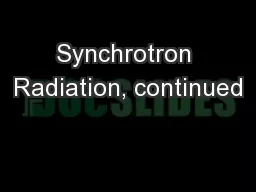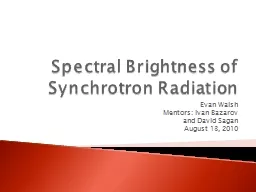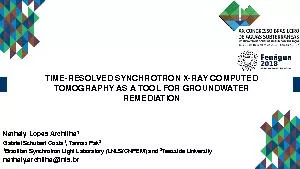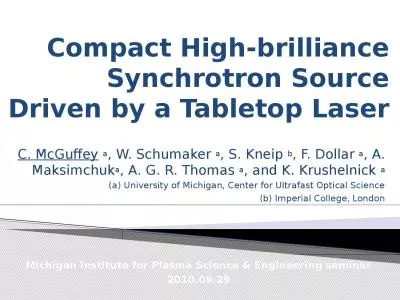PPT-Spectral Brightness of Synchrotron Radiation
Author : sherrill-nordquist | Published Date : 2018-09-22
Evan Walsh Mentors Ivan Bazarov and David Sagan August 13 2010 Accelerating charges emit electromagnetic radiation For synchrotron radiation the radiation is usually
Presentation Embed Code
Download Presentation
Download Presentation The PPT/PDF document "Spectral Brightness of Synchrotron Radia..." is the property of its rightful owner. Permission is granted to download and print the materials on this website for personal, non-commercial use only, and to display it on your personal computer provided you do not modify the materials and that you retain all copyright notices contained in the materials. By downloading content from our website, you accept the terms of this agreement.
Spectral Brightness of Synchrotron Radiation: Transcript
Download Rules Of Document
"Spectral Brightness of Synchrotron Radiation"The content belongs to its owner. You may download and print it for personal use, without modification, and keep all copyright notices. By downloading, you agree to these terms.
Related Documents

